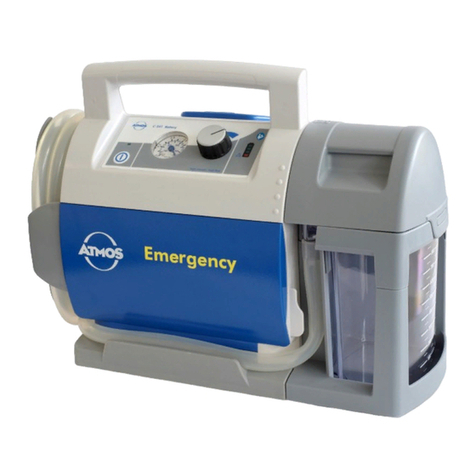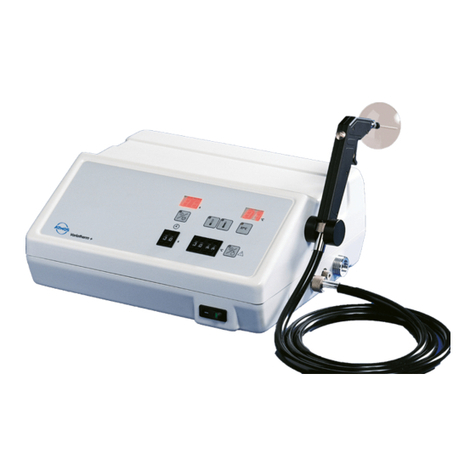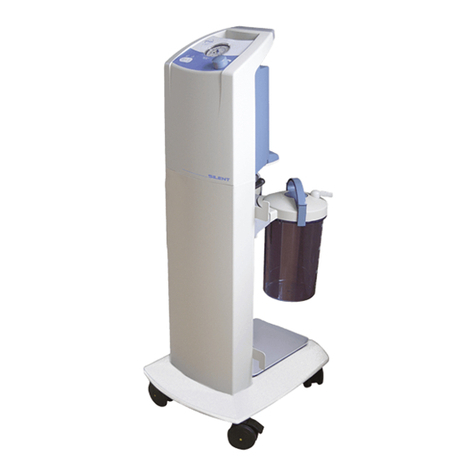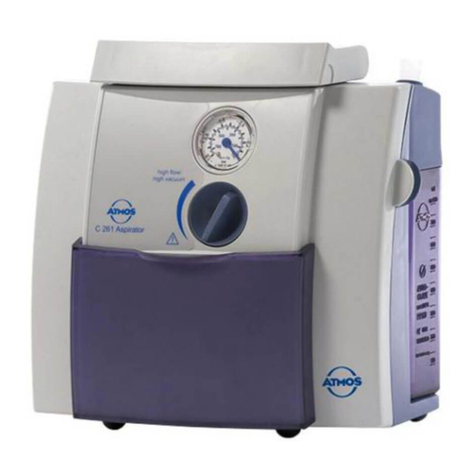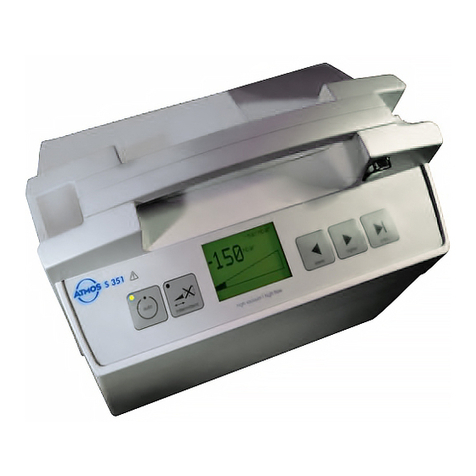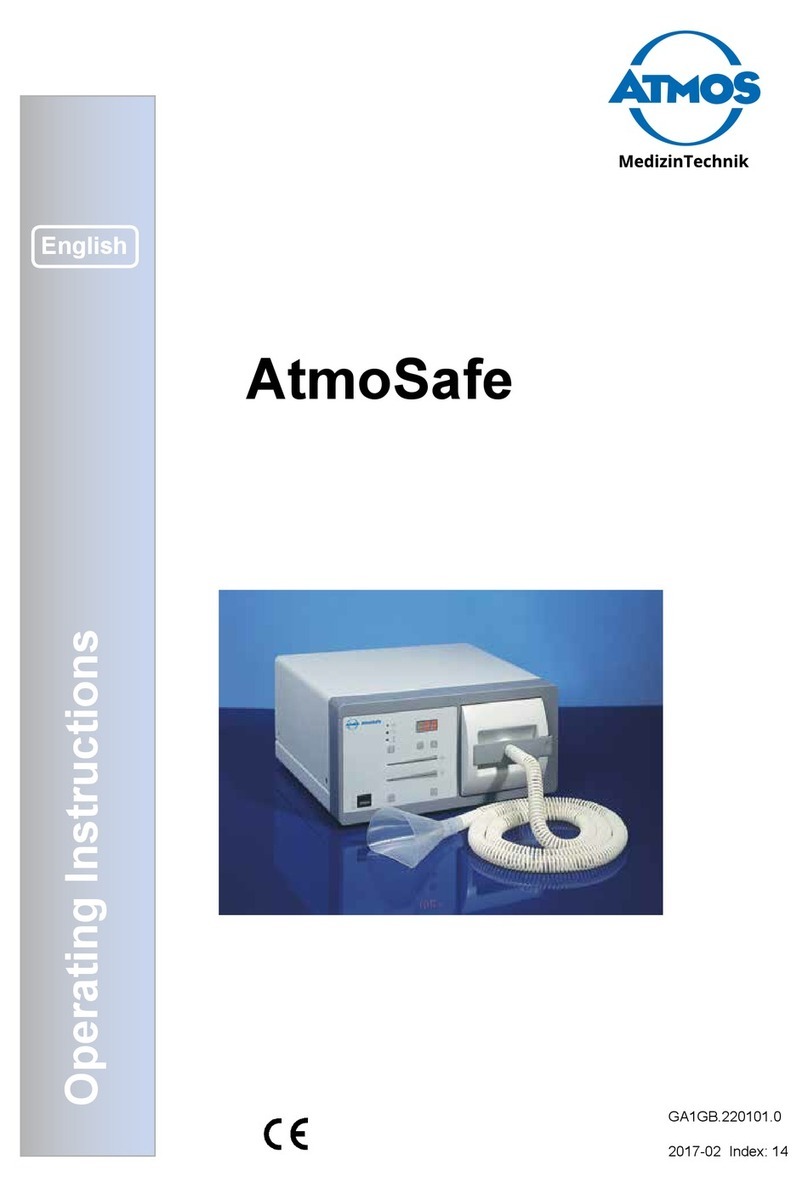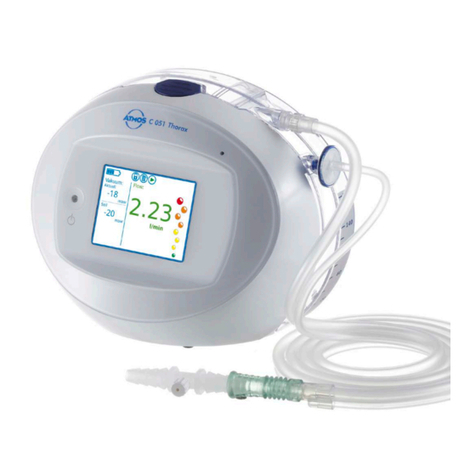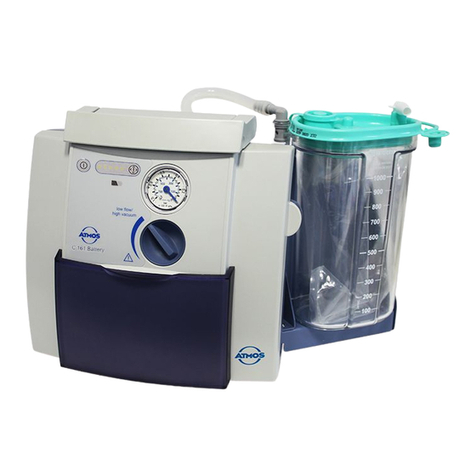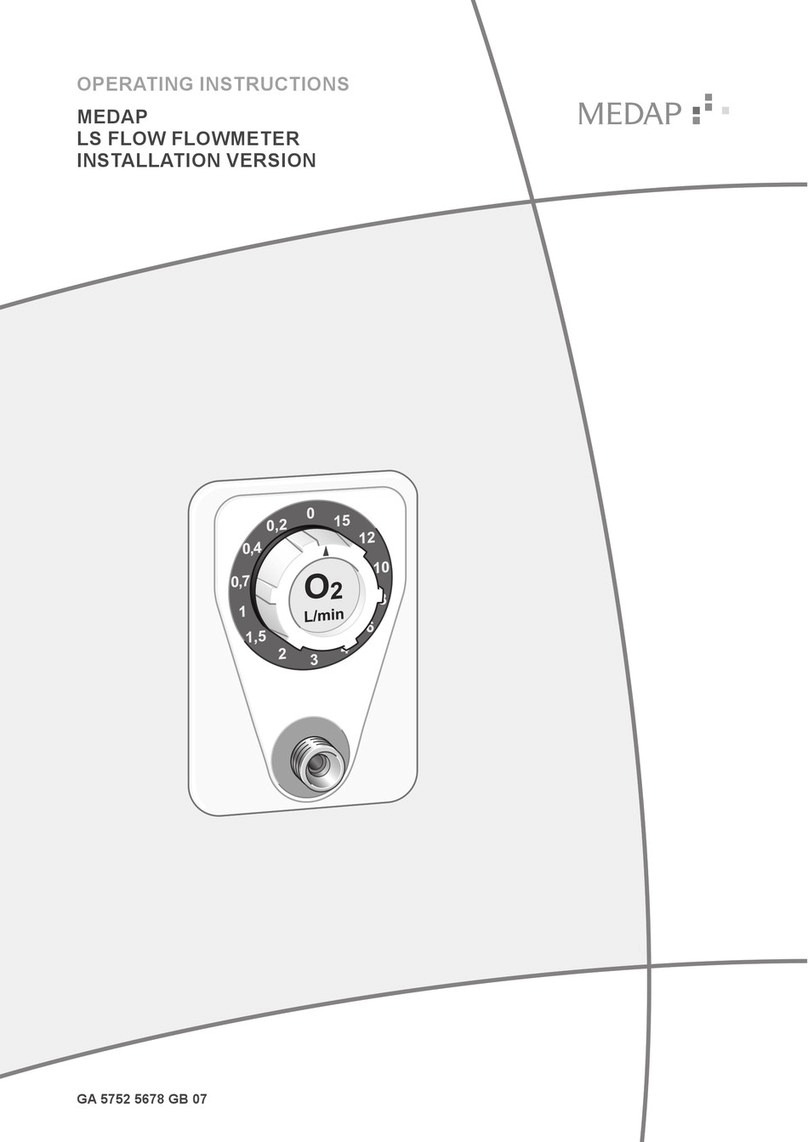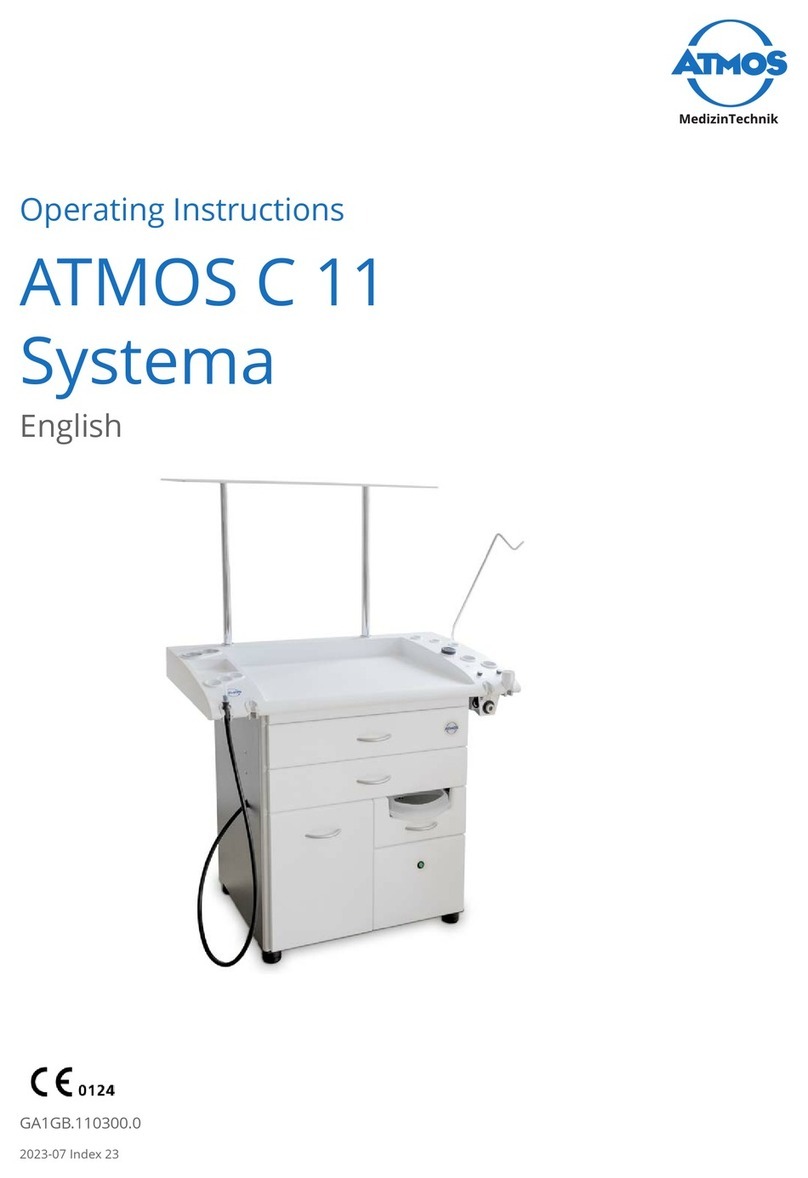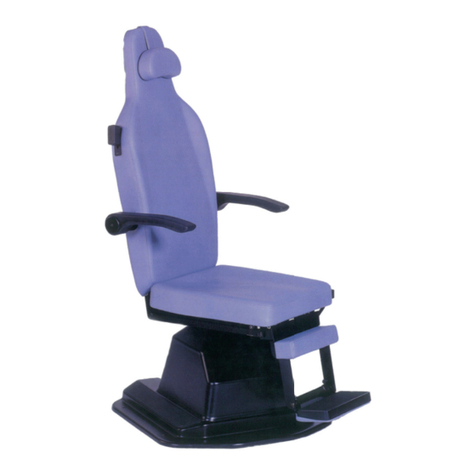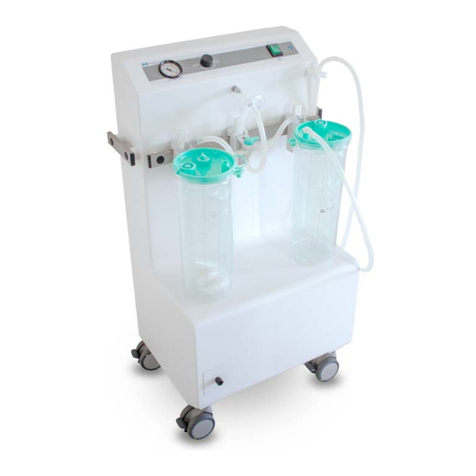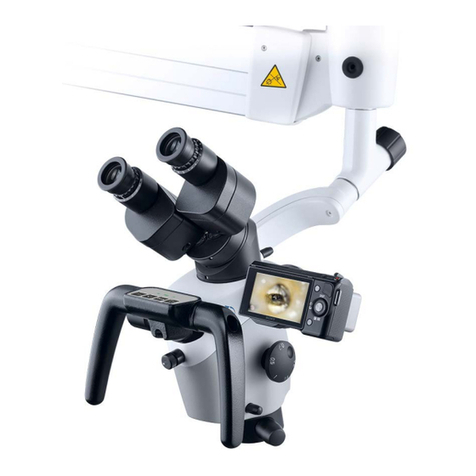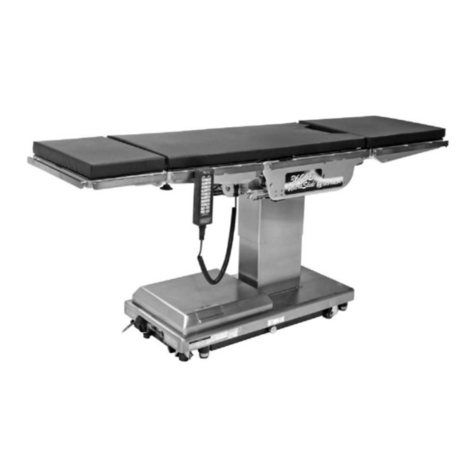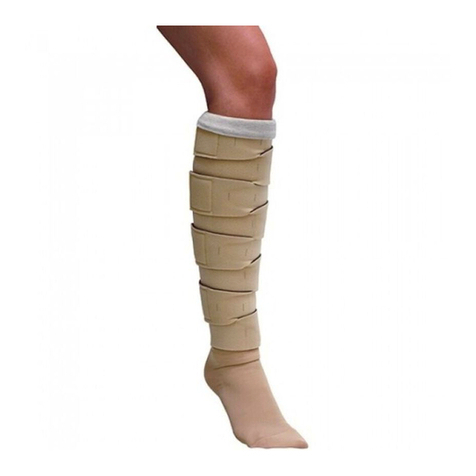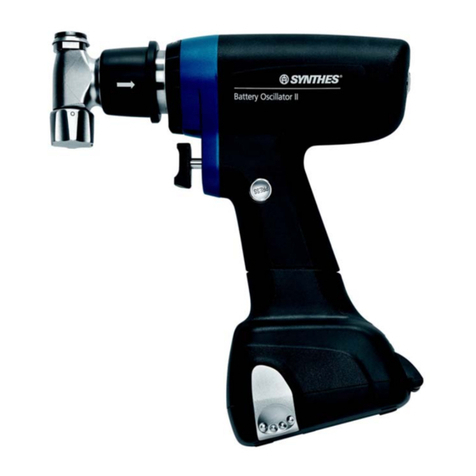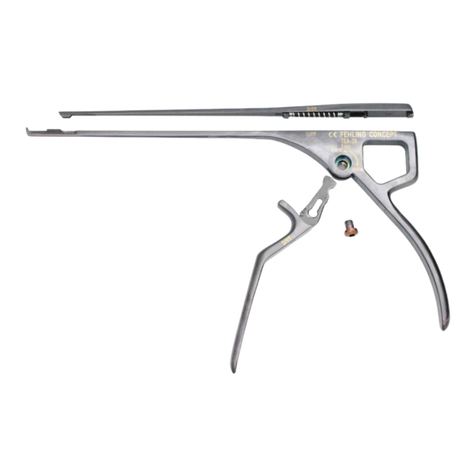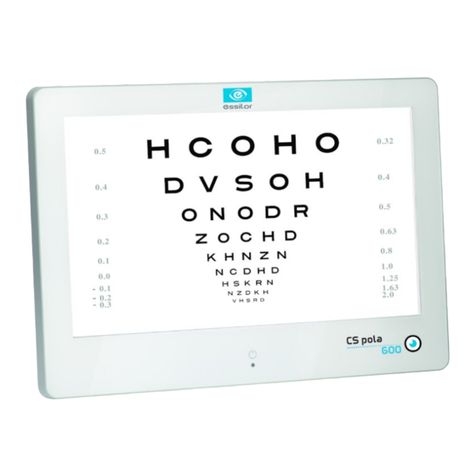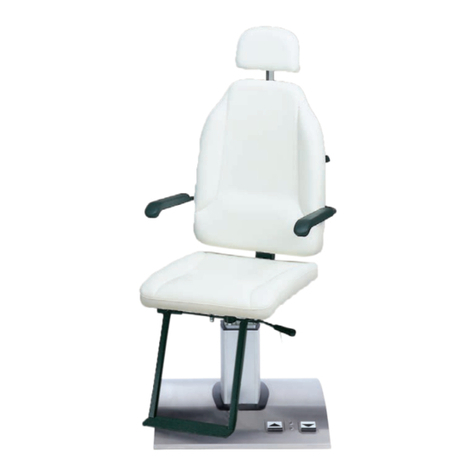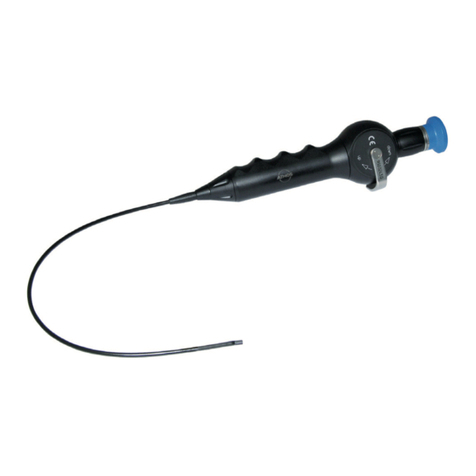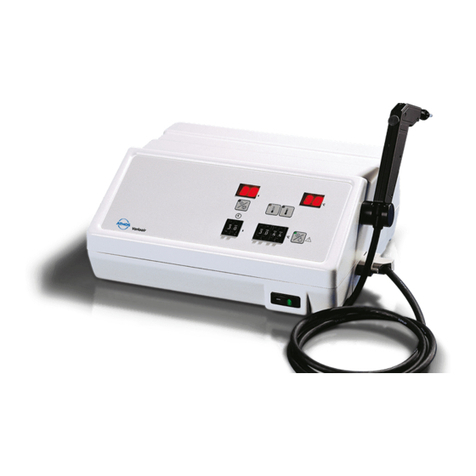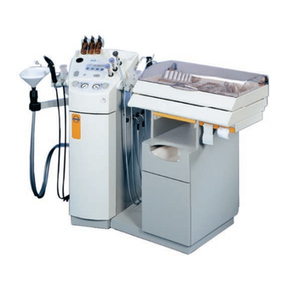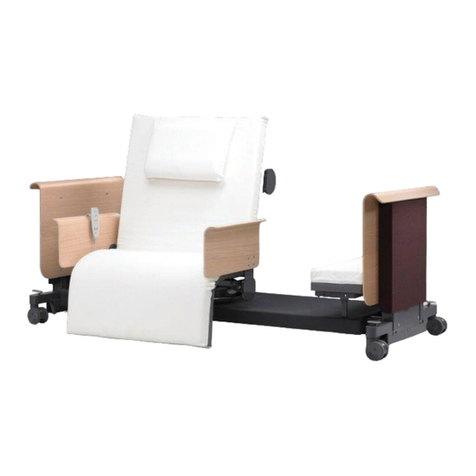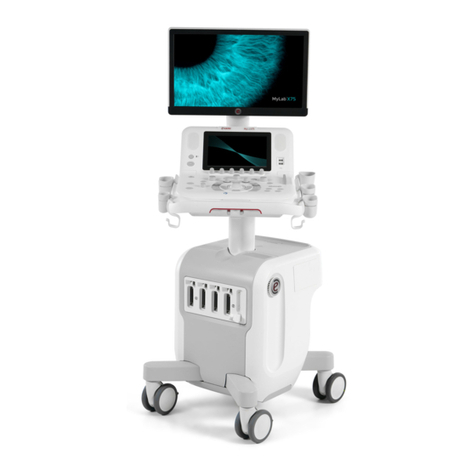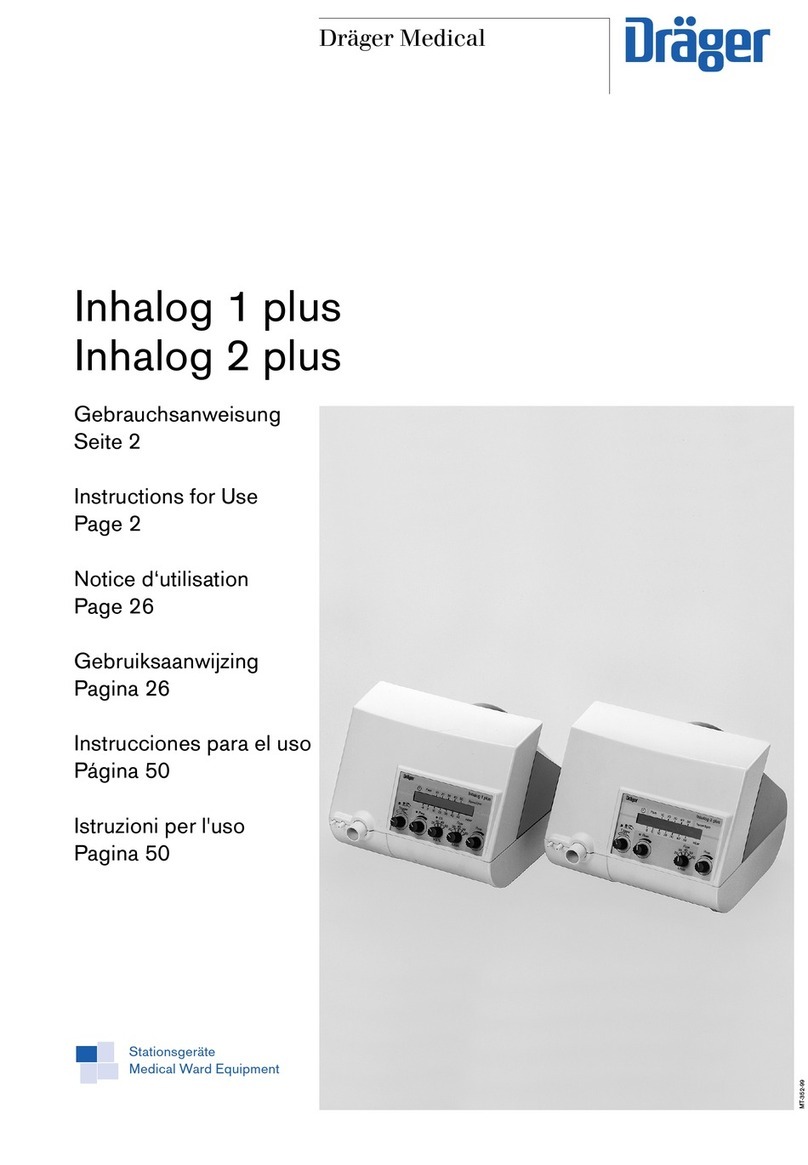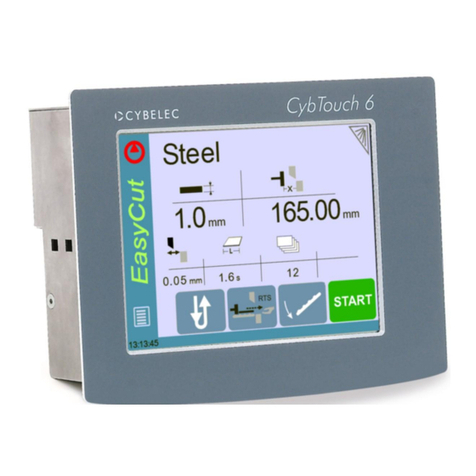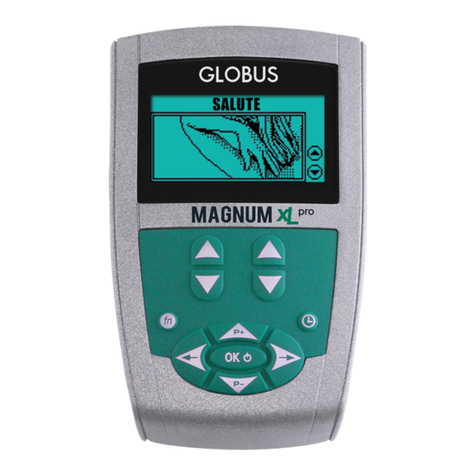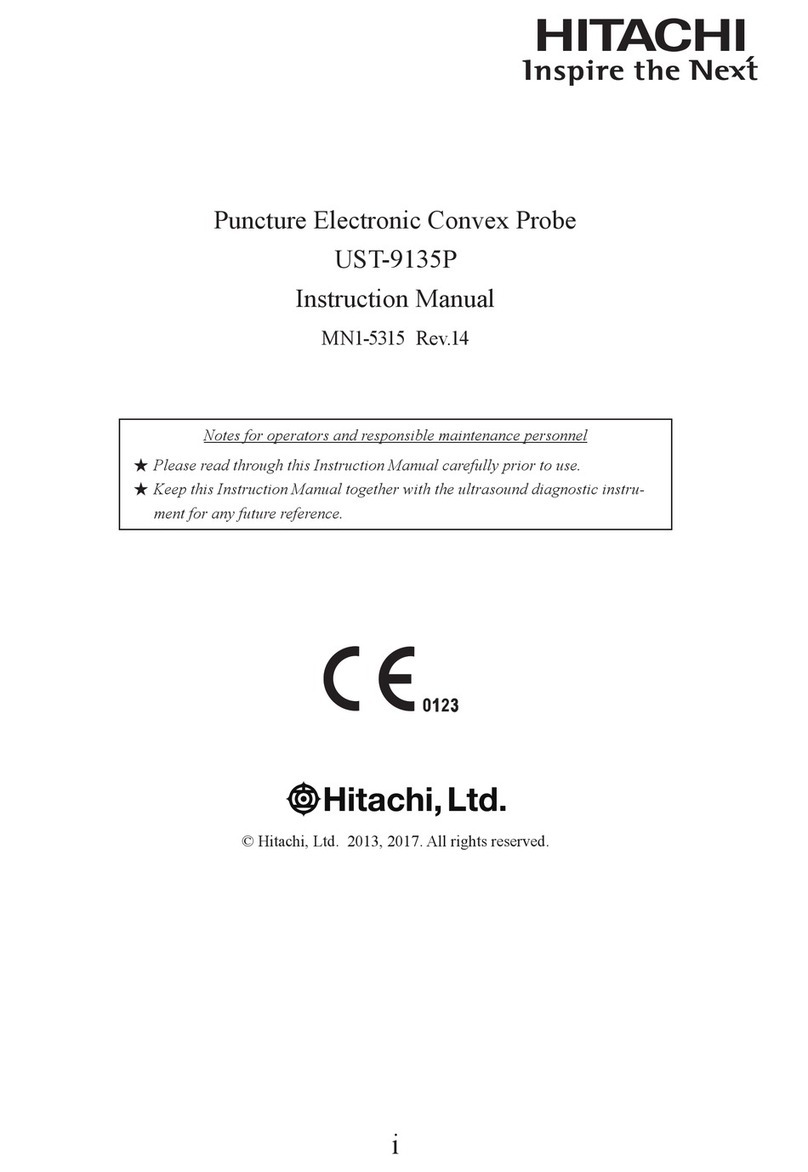
5
1.6 Function
The ATMOS S 201 Thorax is a particularly useful small suction
unit. The device is operated by an electromotive, maintenance-
free piston pump. During operation the pump creates a vacu-
um in the hose system and in the collection jar, with the help of
which secretions can be sucked through the set of hoses.
The pump switches off after creation of the pre-adjusted
vacuum and switches on again only, when the vacuum lies
below a certain tolerance.
The real-time measured ow is shown as numerical value. At
one keypress ow data from up to 12 days are shown in a
graphic.
The secretion is collected in the collection jar, the capacity of
which is 2l. The vacuum at the trocar is measured by means of
the measuring pipe in the set of hoses. The nal vacuum can
be adjusted with the buttons on the operating foil. If required,
the air-ow rate is automatically adjusted. The device adjusts
and keeps the pre-adjusted vacuum automatically in case the
negative pressure in the pleural cavity varies. In this case the
pump starts to balance the negative pressure until the pre-ad-
justed vacuum is reached again and then switches off. These
compensation values, which may vary heavily, can easily be
read on the display. At regular intervals the device rinses the
suction hose with air so that deposits in the suction hose are
avoided and it prevents secretion from penetrating the
measuring channel.
The device is tted with a rechargeable battery. A micro-
processor controlled electronic charging unit in the suction
device guarantees the safe charging of the battery, and thus
overcharging of the battery is avoided. In addition a bacterial
lter located in the cover of the collection jar prevents the entry
of bacteria and secretion into the interior of the device.
There is a carrying strap available for mobile use. A practical
carrying bag and a bed mounting are accessories that can be
ordered.
1.0 Introduction
1.5 Precautions
●Federal (U.S.A.) law restricts this device to sale by or on
the order of a physician.
●Cointainer and hose set are for single patient use and for
one time patient connection only.
●Do not resterilize this device. Container and hose are
single-use products, there is a high risk of infection in
case of re-use. The container cannot be emptied .
●Air vent must remain closed at all times when not in use.
●All hospital protocols for disposal handling and infection
controI should be carefully followed.
●The function of the device must be checked prior to use
(see chapter 3.0 – Setting up and starting up; section
3.3 Functional test)
●When a thoracic catheter is connected leaky connections
may result in an incorrect evaluation of air leaks from the
lung and delay treatment time. Therefore check that all
the connections are airtight to prevent air from entering
from the atmosphere.
●During set up, an incorrectly positioned drainage system
and patient tube may impair uid and air evacuation.
Total obstruction of uid and air evacuation can cause
an increase in positive pressure and possible tension
pneumothorax. Therefore position the drainage system
below the level of the patient`s chest and check that the
patient tube does not form loops or kinks, impairing
drainage of uid and air.
●General. Check that all the connections are airtight.
If the thoracic drainage unit tips over it is advisable to
set it up right again to guarantee operation and to be
able to re-determine the volume and appearance of the
drained uid. If there is the slightest uncertainty about
the operation of the drainage system after it has tipped
over, it is recommended that a new drainage system be
installed to ensure the patient‘s safety.
● Keep the AC adapter connector away from moisture.
●Keep the power cord away from hot surfaces.
● Do not overll water seal above the 2cm ll line.
● Water seal must be lled to prescribed level prior to use
and should be checked regularly to con rm proper
operation.
● Use only pre-packaged sterile uid for lling the water
seal.
●When inspecting the collection chamber routinely
check the volume and appearance of the drained uid
and inform the responsible clinician of abnormalities.
Exceeding the recommended collection volume can
cause obstruction of uid and air evacuation and may
therefore result in an excess pressure pneumothorax.
Always replace the canister when the maximum volume
is reached to ensure the patient`s safety. Replace chest
drain if damaged. Patient tube connections and water
seal, should be checked regularly to conrm proper
operation.
a.) Installation. The product must be used at room
temperature and should not be placed in direct sunlight
as this may result in measurement errors.
In case of noncompliance and misuse of the ATMOS S 201
Thorax any guarantee claims shall expire and ATMOS Medizin-
Technik GmbH & Co. KG assume no liability.
2




















